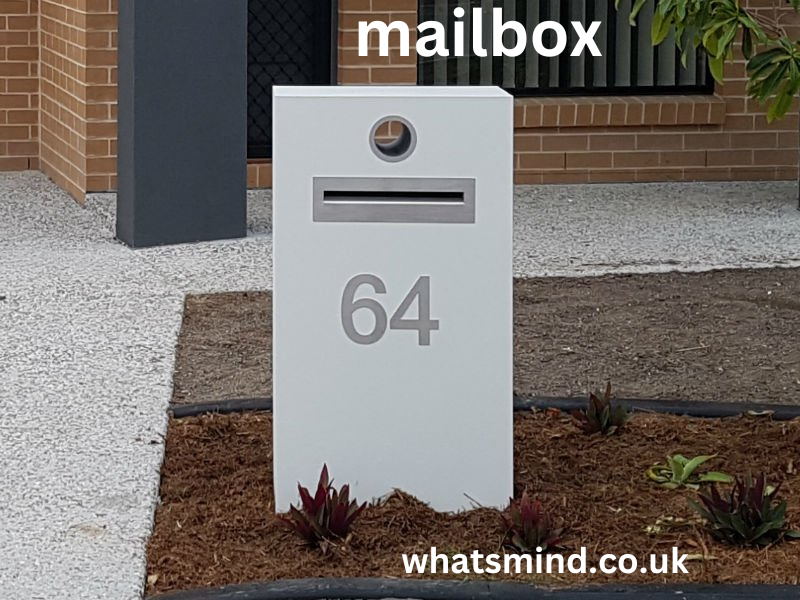Introduction
The humble mailbox might seem like a mundane object, but it plays a crucial role in our daily lives. Whether you’re receiving letters, packages, or important documents, a mailbox is central to our communication and organization. This guide will explore the different types of mailboxes, their uses, and tips for maintaining them effectively.
What is a Mailbox?
Definition and Purpose
A mailbox is a receptacle used to receive and store mail and packages. Typically placed at a convenient location, such as near the front door or along the street, mailboxes ensure that correspondence and parcels are securely delivered and stored until collected.
History of Mailboxes
The concept of a mailbox dates back to the early postal systems. Originally simple and functional, mailboxes have evolved in design and security to meet modern needs. From the classic red mailboxes of postal services to advanced digital mail systems, their role has expanded significantly.
Types of Mailboxes
Residential Mailboxes
Residential mailboxes are designed for personal use and are usually located near homes. They come in various styles, including:
- Post-Mounted Mailboxes: These are attached to a post and placed along the roadside. They are commonly seen in suburban areas.
- Wall-Mounted Mailboxes: Installed on a wall or gate, these are ideal for homes with limited space.
- Column Mailboxes: A decorative option, column mailboxes are often seen in upscale neighborhoods and can include multiple compartments for different addresses.
Commercial Mailboxes
Commercial mailboxes are used by businesses and are built to handle higher volumes of mail. They include:
- Cluster Mailboxes: Common in apartment complexes or office buildings, cluster mailboxes provide individual compartments for each unit.
- Parcel Lockers: Designed to handle larger packages, these lockers are often used in apartment complexes or workplaces where mail volume is high.
Specialty Mailboxes
Specialty mailboxes cater to unique needs and can include:
- Secure Mailboxes: Equipped with locks and reinforced materials, secure mailboxes are used to protect sensitive information and prevent theft.
- Smart Mailboxes: Integrating technology, smart mailboxes offer features like package tracking, notifications, and remote access.
Choosing the Right Mailbox
Factors to Consider
When choosing a mailbox, consider the following factors:
- Size: Ensure the mailbox is large enough to accommodate your typical mail and packages.
- Material: Opt for durable materials like metal or weather-resistant plastics to withstand various weather conditions.
- Security: For added protection, select a mailbox with locking features or reinforced construction.
Design and Aesthetics
The design of a mailbox can also complement your home’s exterior. Choose a style that matches your personal taste and enhances the overall appearance of your property.
Maintaining Your Mailbox
Regular Cleaning
Keep your mailbox clean by regularly wiping it down to remove dirt and grime. This helps maintain its appearance and functionality.
Checking for Damage
Inspect your mailbox periodically for signs of wear and tear. Repair or replace any damaged parts to ensure it remains secure and functional.
Winterizing
In colder climates, prepare your mailbox for winter by removing snow and ice regularly and checking for any potential damage from harsh weather conditions.
Common Mailbox Issues
Lost or Stolen Mail
If you experience lost or stolen mail, report it to your local postal service immediately. Consider upgrading to a secure mailbox to prevent future issues.
Mailbox Blockages
Blockages can occur due to debris or accumulated snow. Ensure your mailbox is clear and accessible for mail delivery.
The Future of Mailboxes
Technological Innovations
The future of mailboxes includes advancements in technology, such as automated delivery systems and smart mailboxes with enhanced features for convenience and security.
Sustainability
Sustainable practices in mailbox manufacturing and recycling are becoming more prevalent, with an emphasis on eco-friendly materials and energy-efficient designs.
Conclusion
Mailboxes play an essential role in our communication and organization. From traditional residential units to advanced commercial and specialty options, understanding the different types and maintaining your mailbox effectively can enhance its functionality and security. Whether you’re upgrading your current mailbox or selecting a new one, consider your needs and preferences to make the best choice.
FAQs
1. How do I choose the right mailbox for my home?
Consider factors such as size, material, security features, and design to choose a mailbox that fits your needs and complements your home.
2. What materials are best for a durable mailbox?
Durable materials for mailboxes include metal (such as aluminum or steel) and weather-resistant plastics, which can withstand various weather conditions.
3. How can I secure my mailbox from theft?
Opt for a mailbox with locking features or reinforced construction to protect your mail and packages from theft.
4. What should I do if my mailbox is damaged or broken?
Inspect the damage and repair or replace any damaged parts to ensure your mailbox remains functional and secure.
5. Are there any new technologies in mailboxes?
Yes, innovations include smart mailboxes with tracking features, automated delivery systems, and eco-friendly designs that focus on sustainability.
